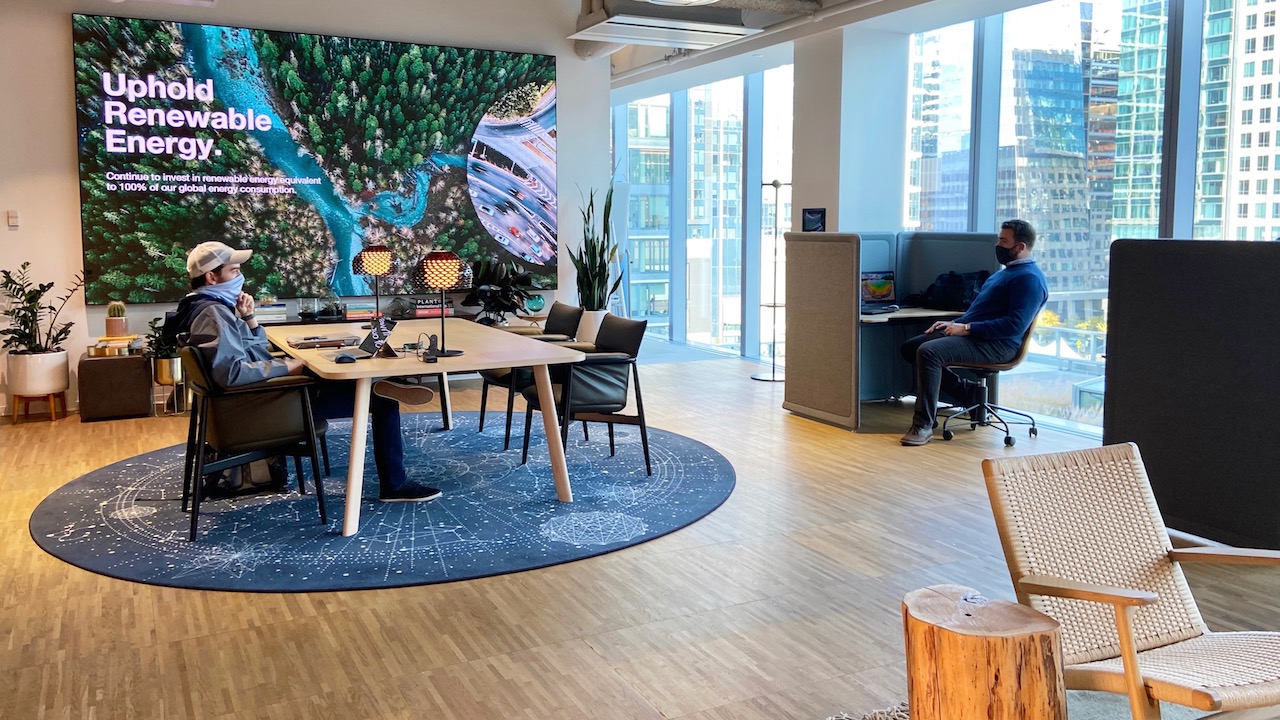Rethinking Your Office
Q&A with Red Thread on Post-2020 Workplace Design

With the pandemic reshaping the way we work, the direction of workplace design is up in the air. We reached out to John Mitton, CTO/VP of audiovisual technology at design consultancy Red Thread, to learn what trends are influencing office design in the post-2020 world.
AV Technology: How has the pandemic altered the direction of office design? Are open floorplans a thing of the past? Will we see more cubicles again?
John Mitton: The pre-COVID workplace was designed to support innovative ways of working combined with high levels of human interaction to fuel creativity, inspiration, speed, and agility. These environments now pose challenges as organizations strive to create a safe and compelling workplace that’s still inspiring, but even more flexible, to help employees get work done. We expect to see environments that equally support individual and teamwork, allow for greater flexibility and mobility, provide for a variety of open and enclosed spaces, and braid digital and physical interactions.
The reimagined office we envision embraces these design principles to also eliminate distance disparity so distributed teamwork is cross-functional, cross-cultural, and cross-organizational. It includes a variety of concept spaces that create an equitable experience for distributed teams, such as:
- Broadcast Studio: Studio for interactive presentations for one to many in an optimal environment
- Collaboration Nest: Planning a “nest” in the open office to maintain eye contact with local and remote participants for equitable presence
- Connect Rooms: Enclaves for remote collaboration or focused work
- Pitch Room: Dual-zone space supports presenter and team with easy content viewing for local and remote participants
- Café and Flex Meeting Zone: Open, casual lounge that supports large-format display or informational digital signage
- Open Flex Space: Hyper flexible open workspace with user-configurable furniture, technology, and boundary solutions
AVT: What do you expect the optimal floor space breakdown to be going forward in terms of personal workspace to meeting and collaboration areas?
JM: Learnings from the work-from-home experience and early returns to the office show new patterns emerging. People who once individually worked in open spaces now look for privacy and shielding while teams that frequently worked in enclosed conference rooms now seek flexible spaces without capacity limitations. Spaces need to balance both individual and team needs by creating a combination of “me” and “we” spaces where collaboration and focused work can flow. For example, conference rooms will be reinvented without four walls and a door to become more like collaboration nests, while individual spaces will incorporate versatile privacy solutions like Steelcase work tents.
A daily selection of features, industry news, and analysis for tech managers. Sign up below.

AVT: What specific technologies will help foster success in these environments?
JM: To build trust with employees and demonstrate that the workplace is safe, organizations need to implement new technologies that monitor safety compliance. Reservation systems like Spaceti and occupancy management will be just as important as air purification systems like PurifySpaces, air quality dashboards, and digital signage. We expect collaboration technology to play a major part in fostering successful post-COVID office environments, including Microsoft Teams Rooms or Hardware-as-a-Service (HaaS) solutions.
When it comes to virtual collaboration, having high-quality video is critical. All-in-one videoconferencing solutions create high-performance meeting rooms that provide an equitable experience for all participants. Mobile technologies like Microsoft Surface Hub 2S on the Steelcase Roam Cart allow employees to seamlessly collaborate anywhere. Now that people are craving remote experiences that are even better than being in the room together, solutions like the Broadcast Studio are reinventing the presentation experience.
AVT: What steps can businesses begin taking to evaluate their workplace needs?
JM: It’s not simply about going back to the office at this point; it’s about going back to something better. Businesses can start evaluating their current spaces to see if they align with Steelcase’s new design considerations to create safe and compelling places:
- Design for safety: Organizations need to help detect, prevent, and mitigate the spread of illnesses while also creating an inspiring environment where people will want to work
- Design for productivity: Organizations should create multimodal spaces that support collaboration and focus work equally
- Design to inspire community: Organizations should rethink the purpose of the office from just a place to work to becoming the infrastructure for building social capital and fostering a sense of purpose and belonging
- Design for flexibility: Organizations need to design spaces that can be easily adapted, especially as more flexible work policies are implemented
Since organizations are now competing with working from home, the office needs to step it up. Whether its adopting new technologies, shifting design principles, or incorporating concept spaces that create a more equitable experience for workers, there’s no denying the need for change.
Matt Pruznick is the former editor of AV Technology, and senior editor for Systems Contractor News and Residential Systems. He is based in New York.

